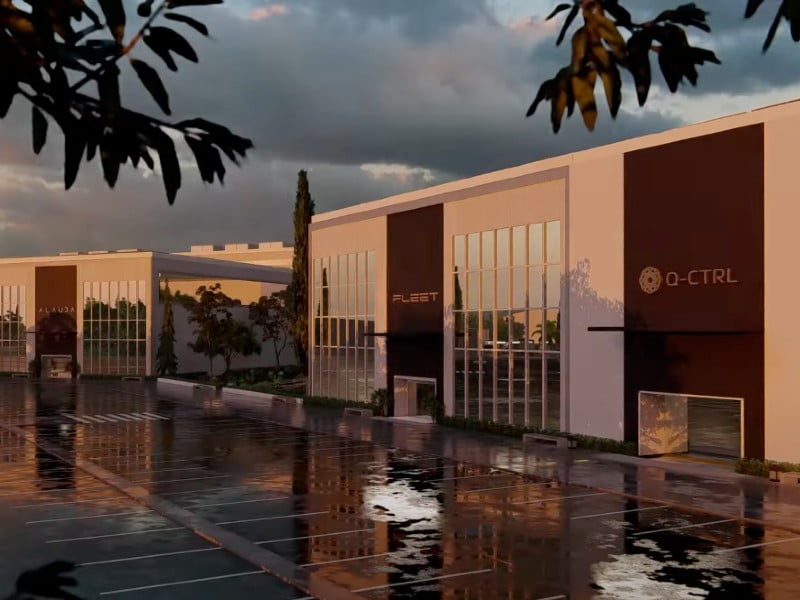The federal government will provide $20 million to a satellite hub in Adelaide, the second major Commonwealth manufacturing grant going towards South Australia in the lead up to the state election.
The Commonwealth funding comes in the form of a collaboration stream grant from the $1.3 billion Modern Manufacturing Initiative. It will go towards the Australian Space Park, to be established at Adelaide Airport, with the South Australian government also providing $20 million and an industry group led by Fleet Space Technologies to contribute $26.1 million.

It comes just days after the first collaboration stream grant was announced, also in partnership with the South Australian government, for the creation of three plant protein manufacturing plants in the state.
The South Australian state election will be held on 19 March, with Liberal Premier Steven Marshall risking losing after only one term in government.
Both of the significant funding announcements have featured Senator for Australia Simon Birmingham and Mr Marshall prominently with quotes.
There have been long-running concerns from the Opposition that the manufacturing grants had rorts “baked in”, with shadow industry minister Ed Husic this week claiming it was an “election slush fund”.
Construction on the $66 million Australian Space Park will begin early next year. It will house Fleet, Q-CTRL, ATSpace and Alauda Aeronautics, with small satellites and rockets manufactured at the site.
The funding boost has been welcomed by Space Industry Association of Australia chief executive James Brown after the space sector was largely left out of the first round of smaller manufacturing grants.
“It’s critical. In the first round of the MMI announcements there wasn’t much for space even though it was one of the six identified sectors. It’s good to see this announcement of some serious funding for space capability,” Mr Brown told InnovationAus.com.
“We know we’re going to have to be manufacturing our own satellites over the next few decades for space purposes and for communications and earth imaging. It’s really good to see this step in the right direction of having our own manufacturing capability.”
Australia is zeroing in on its areas of competitive advantage in terms of space, and manufacturing and launching satellites is one of them, Mr Brown said.
“Industry is working out where it is willing to invest money, and government is signalling where its priorities are and doing a lot of work to understand the international view on what Australia should be producing,” he said.
“One clear sweet spot is the manufacture of satellites in the 100-200kg class, bigger than cubesats but not giant behemoth satellites. There’s a clear need for Australia and a clear advantage for Australia, and it ties well with the launch capability being developed in Australia as well. With this investment and the right strategy, within five years satellites will be manufactured in Australia and launched here.”
The Australian Space Park will make South Australia the largest manufacturer of satellites in the country, Industry minister Angus Taylor said.
“Space technologies are drawn on every day by Australians when using navigation systems in their cars and smartphones, by farmers to monitor the health of their crops and by emergency workers to plan and respond to bushfires,” Mr Taylor said.
“This is a huge opportunity for Australia. Our space businesses are already globally-recognised but these investments are about driving their potential to scale up and create more high-value jobs for Australians. Not only will this investment in South Australia help grow our space sector, it will foster the next generation of space manufacturers and researchers.”
It will also boost Australia’s sovereign capability in space, Science minister Melissa Price said.
“This project will lock in Australia’s ability to deliver along the entire space supply chain. From research and design through to manufacture and operation, Australia’s credentials as a leading space nation are going to be significantly strengthened by this investment,” Ms Price said.
Earlier this week the federal government announced the first grant under the collaboration stream of the Modern Manufacturing Initiative, the largest form of grants on offer.
This was in the form of $113 million going towards Australian Plant Proteins’ partnership with Australian Milling Group, Thomas Foods International and the South Australian government to establish manufacturing plants in the state.
The collaboration stream offers grants of between $20 million and $200 million for projects with business-to-business or business-to-research collaboration at their core. The grant can cover up to 33 per cent of a project’s total costs.
The Opposition has claimed that the manufacturing grants are being used as an “election slush fund”, with delays in unlocking funding from the program, which was launched in late 2020, hampering Australia’s economic recovery and endangering its national security.
Do you know more? Contact James Riley via Email.


It should be remembered that the MMI grant rules very specifically stated that the Prime Minister would be the final arbiter for these grants.